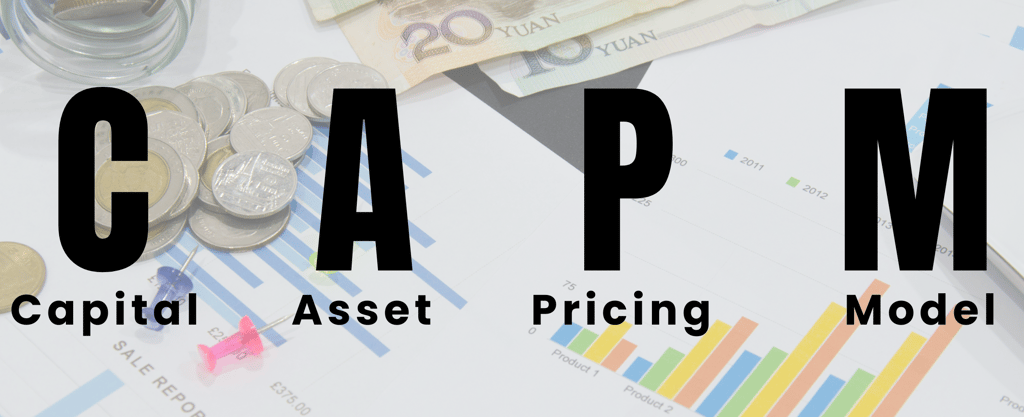What is Capital Asset Pricing Model (CAPM)?


Introduction
Investors are always asking one key question: Is the return I’m expecting worth the risk I’m taking? To answer this, finance professionals use a widely respected tool known as the Capital Asset Pricing Model, or CAPM. The CAPM is a cornerstone of modern finance theory. It helps estimate the return an investor should expect for taking on a certain level of risk. Whether you’re evaluating a stock, building a portfolio, or assessing the cost of equity, understanding CAPM is essential. In this blog, we’ll break down CAPM in a simple, easy-to-understand way—no complex jargon, just clarity. We’ll walk through the formula, its parts, examples, advantages, and limitations.
What is CAPM?
The Capital Asset Pricing Model (CAPM) is a formula used to calculate the expected return on an investment, given its risk relative to the market.
It assumes that investors need to be compensated in two ways:
The time value of money (measured by the risk-free rate)
The risk taken (measured by the asset’s sensitivity to market movements)
In short, CAPM tells you how much return you should demand from an asset based on its risk.
The CAPM Formula
Here is the standard CAPM formula:
Expected Return (Re) = Rf + β × (Rm - Rf)
Where:
Re = Expected return of the asset
Rf = Risk-free rate
β (Beta) = Measure of the asset’s risk compared to the market
Rm = Expected market return
(Rm - Rf) = Market risk premium
Let’s take a closer look at each component.
Components of the CAPM Formula
1. Risk-Free Rate (Rf)
The risk-free rate represents the return on an investment with zero risk. In most cases, this is the yield on long-term government bonds, such as the 10-year U.S. Treasury bond. It compensates investors for the time value of money—money today is worth more than the same amount in the future.
Example: If the yield on a 10-year government bond is 3 percent, Rf = 3%.
2. Beta (β)
Beta measures how much an asset’s price moves in relation to the overall market.
Beta = 1: Asset moves in line with the market
Beta > 1: Asset is more volatile than the market
Beta < 1: Asset is less volatile than the market
Beta < 0: Asset moves inversely to the market
Example: A stock with a beta of 1.5 is 50 percent more volatile than the market. If the market goes up 10 percent, the stock may rise 15 percent. If the market drops 10 percent, the stock could fall 15 percent.
3. Market Return (Rm)
This is the expected return of the market as a whole. Analysts usually estimate this based on long-term historical returns of a major index like the S&P 500.
Example: If the historical return of the S&P 500 is 10 percent, then Rm = 10%.
4. Market Risk Premium (Rm - Rf)
This is the extra return investors demand for taking on risk in the market, over and above the risk-free rate.
Example:
If Rm = 10% and Rf = 3%, then the market risk premium = 7%.
CAPM Example: Calculating Expected Return
Let’s say you are analyzing a stock with the following characteristics:
Risk-free rate (Rf) = 3%
Expected market return (Rm) = 10%
Stock beta (β) = 1.2
Using the CAPM formula:
Re = 3% + 1.2 × (10% - 3%)
Re = 3% + 1.2 × 7%
Re = 3% + 8.4% = 11.4%
So, based on its risk profile, you should expect this stock to return 11.4 percent annually. If the stock is offering a return less than 11.4 percent, it may not be compensating you enough for the risk. If the return is greater, it may be a good opportunity, assuming all other factors are favorable.
Real-World Use of CAPM
1. Valuing Stocks
Investors and analysts use CAPM to estimate the cost of equity, which is essential when valuing a company using models like Discounted Cash Flow (DCF).
2. Portfolio Construction
CAPM helps build portfolios that match an investor’s risk tolerance. By comparing expected returns across assets, investors can decide which ones provide the best return for their level of risk.
3. Performance Evaluation
CAPM helps determine whether a portfolio manager is delivering alpha—returns above the risk-adjusted expected level.
CAPM vs. Actual Return
Let’s compare the expected return of a stock using CAPM with its actual return. If the expected return (via CAPM) is 10 percent but the stock delivers 15 percent, it has outperformed expectations. However, if the actual return is only 6 percent, it underperformed, given its risk. This analysis helps investors separate skill from luck and adjust portfolios accordingly.
Advantages of CAPM
1. Simplicity
The formula is straightforward and easy to apply across different asset classes.
2. Risk-Return Logic
CAPM connects the concept of higher risk requiring higher return in a logical framework.
3. Standardized Use
CAPM is used globally by investment analysts, financial advisors, and portfolio managers. It’s an industry standard.
Limitations of CAPM
While CAPM is useful, it has some important limitations:
1. Assumptions are Unrealistic
CAPM assumes a perfect market with no transaction costs, taxes, or liquidity issues. In the real world, such conditions rarely exist.
2. Beta is Not Constant
Beta can change over time based on the company’s operations, industry developments, and market conditions. Relying on historical beta may not reflect future risk.
3. Difficult to Estimate Market Returns
Estimating the expected return of the market is more art than science. Different analysts may use different historical periods or assumptions.
4. Single-Factor Model
CAPM only considers market risk. It ignores other factors such as company size, value vs. growth orientation, or macroeconomic risk.
Practical Example: CAPM for Apple Inc.
Let’s say you’re analyzing Apple (AAPL). Assume the following data:
Risk-free rate = 3%
Expected market return = 9%
Beta of Apple = 1.3
Using CAPM:
Re = 3% + 1.3 × (9% - 3%)
Re = 3% + 7.8% = 10.8%
This means Apple’s expected return is 10.8% based on its beta. If Apple is consistently delivering above this, investors might see it as outperforming expectations.
When to Use CAPM
CAPM is best used when:
Comparing the risk and return of different stocks
Estimating the cost of equity in company valuation
Evaluating a portfolio manager’s performance
Making investment decisions in a diversified market
Final Thoughts
The Capital Asset Pricing Model is a foundational tool in finance. It helps answer a critical question: Is the return I’m getting worth the risk I’m taking? While not without limitations, CAPM gives investors a logical and quantitative way to evaluate assets and manage risk. It is particularly useful when combined with other tools like fundamental analysis, technical indicators, and macroeconomic forecasting. Understanding how CAPM works can significantly improve how you evaluate stocks, build portfolios, and make smart investment decisions.


